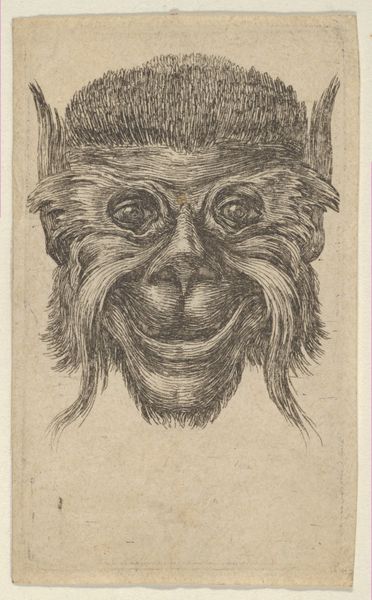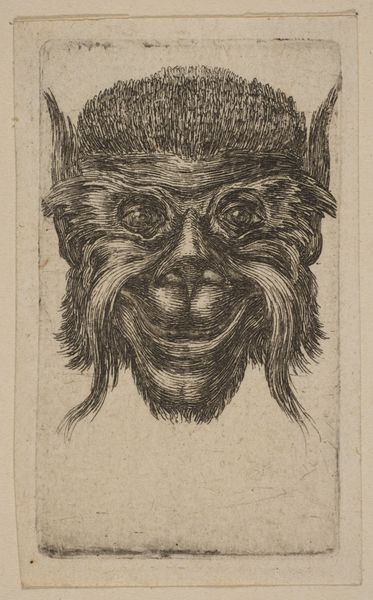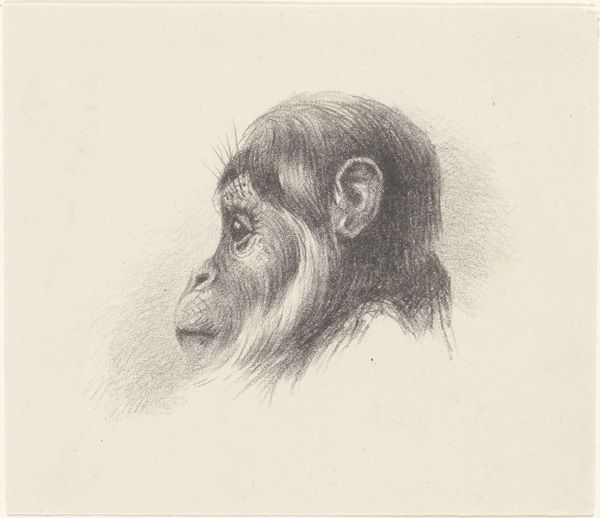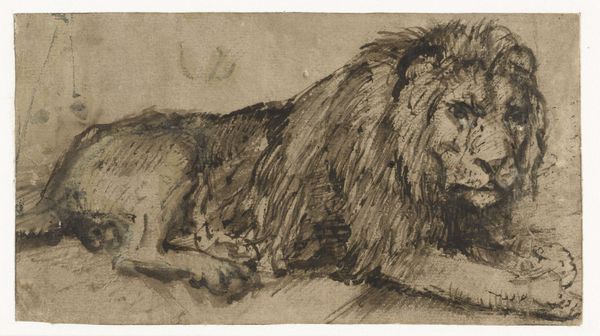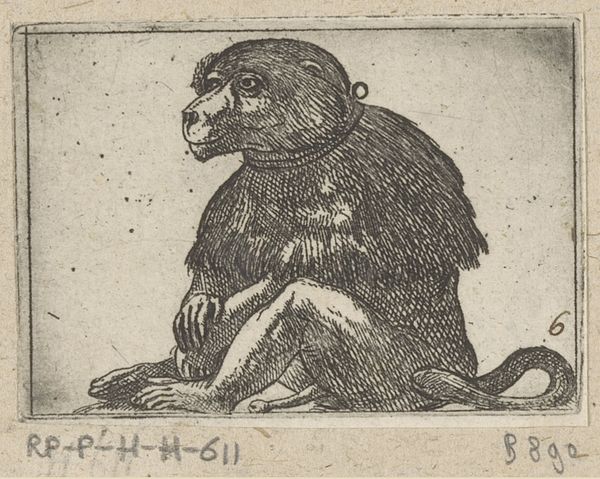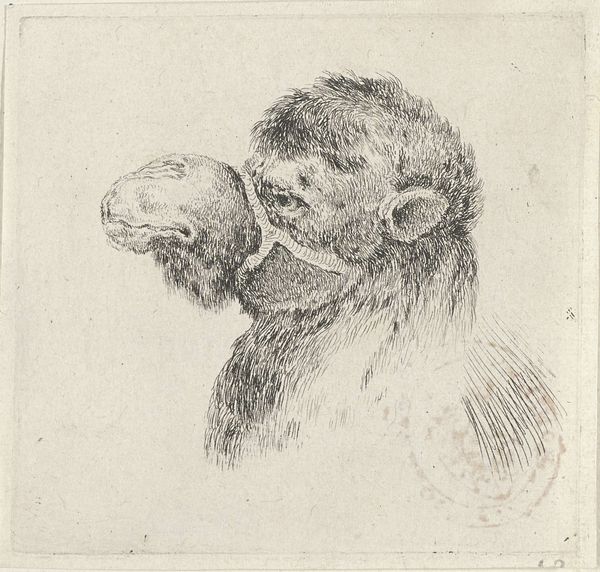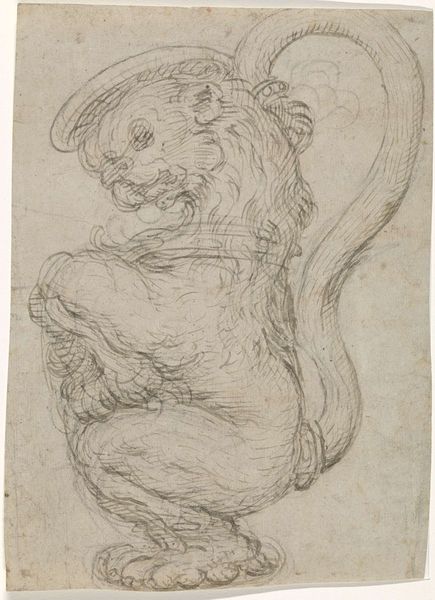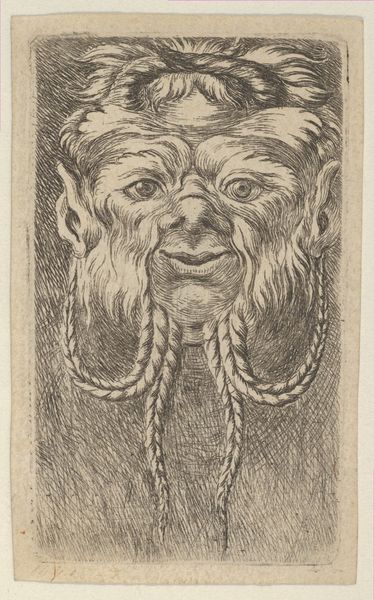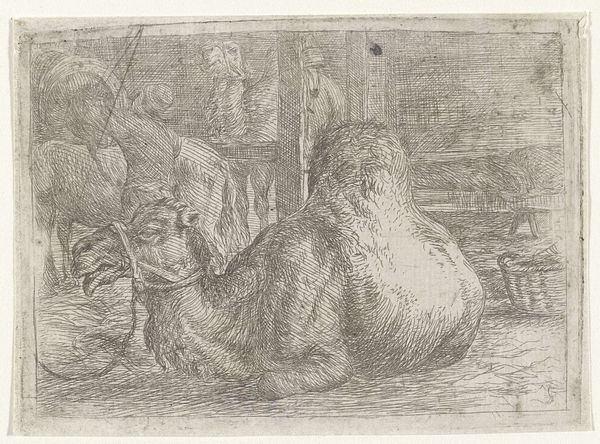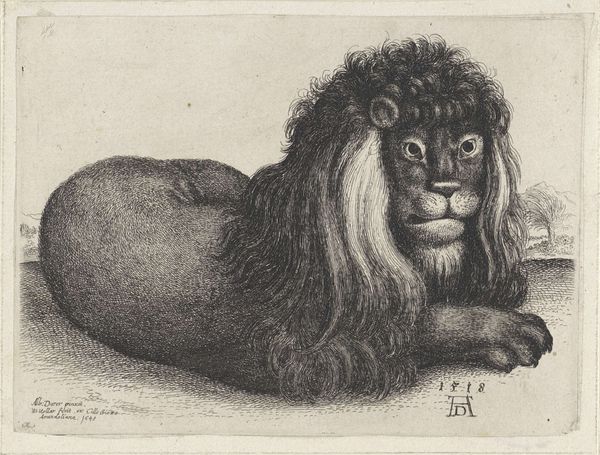
print, etching
#
portrait
# print
#
etching
#
figuration
#
realism
Copyright: National Gallery of Art: CC0 1.0
Editor: Mordecai Moreh's etching, "Chimpanzee," created in 1966, is strikingly realistic, and yet there are surreal elements in the background. The chimp's gaze is incredibly human-like, almost confrontational. How do you interpret this work? Curator: That gaze is key, isn't it? Look at the historical context: 1966. Consider the social upheaval, the civil rights movement, and growing awareness of speciesism. Moreh’s decision to portray this chimpanzee with such palpable humanity encourages us to confront our own place within the animal kingdom, doesn't it? And to question the hierarchies we've constructed. What do you make of the figures etched in the background? Editor: They look like angels or winged humans, but very faint. Almost like a memory or a dream. Curator: Exactly! That juxtaposition is potent. We have this hyper-realistic depiction of a chimpanzee – an animal often othered – paired with almost ethereal representations of idealized humans. Are we really that different? And who gets to define 'humanity' anyway? It's a sharp commentary on anthropocentrism, isn’t it? Consider also how printmaking allows for reproducibility - is this work intended for a broad audience? What statement might Moreh be hoping to provoke on the status and agency of animals and how that corresponds to marginalized human communities? Editor: So, it's not just a portrait of a chimpanzee. It's a statement about the human condition, using the animal as a mirror. Curator: Precisely! Art allows us to re-evaluate ourselves through unconventional juxtapositions, enabling us to examine entrenched cultural biases. And this artwork embodies that function quite beautifully. Editor: I will certainly view other portraits through this lens, particularly thinking of the colonial power dynamic when they involve animals or 'others'. Thank you.
Comments
No comments
Be the first to comment and join the conversation on the ultimate creative platform.

